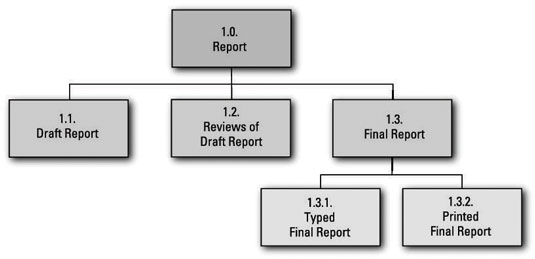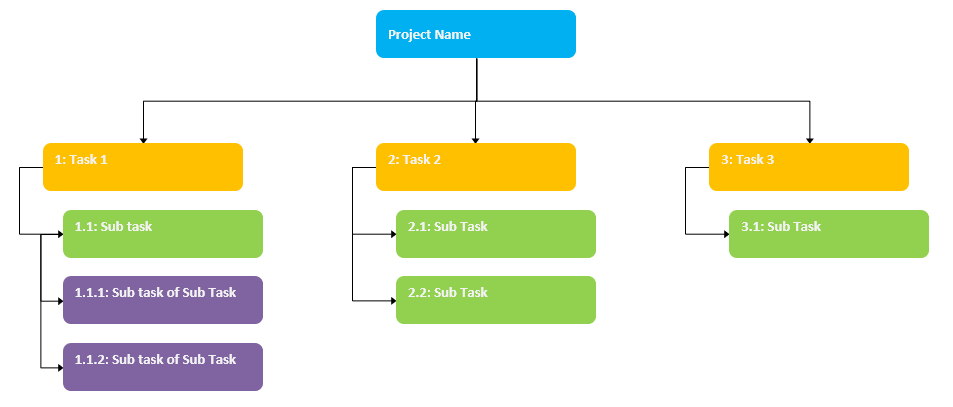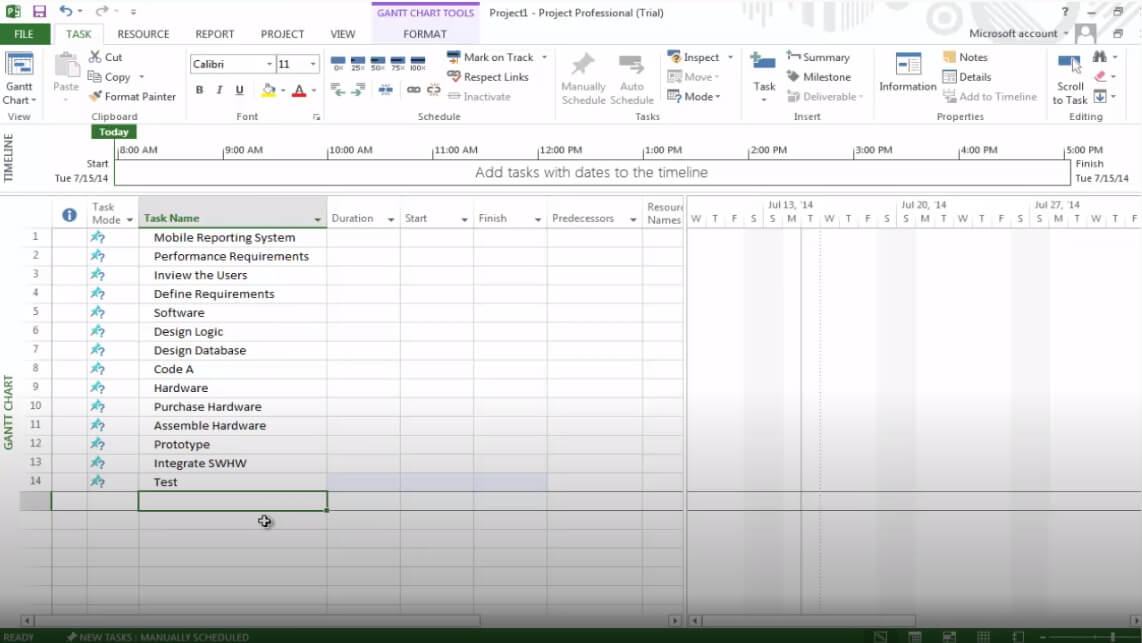

Depending on the audience, you may want to have both outline and diagram versions available.
#How to create a wbs chart software
You could then create a WBS diagram manually or using software that will do so automatically. For our example, the final version of our WBS for a website development project might look like the following.

Gather Requirementsģ.1 Evaluate options against requirementsĤ.2 Build or acquire front end (user interface)Ĩ.3 Make site live Sample WBS for Website Development: Final VersionĬontinue on to as many levels as you need to represent the work at a level that is detailed enough that stakeholders get a clear picture of what is involved in the project and what to expect, but not so detailed that the WBS lists every individual task that must be done. You can incorporate the WBS codes as you go, especially if you are using software that creates them automatically, or wait until you have captured all the information to add them.

Next, dig down into each of those and capture the next more detailed level of information about what will be done. Just be sure to capture the high-level types of work. Roll Out Site Note that you are not at this point tracking who will be performing each piece or even whether work in each area is to be done chronologically or simultaneously. For example you might start out with a list like this as the starting point for a WBS for your website development project: 1. You may be listing actions or deliverables depending on your project. Start by listing the key pieces of the project work. If your project is more involved, for instance incorporating e-commerce and social networking into your website, be prepared to expand your WBS appropriately. For purposes of this example just think in terms of a general-purpose business website. Example WBS for Website Development: Getting StartedĪll web development projects are of course unique, so the type and extent of work involved in each one varies considerably. Read more about the creation and use of a WBS in this article series. Often, however, your WBS will illustrate areas of work that will be going on simultaneously, perhaps by different departments or even within the same project team. In some cases the items in a WBS will actually represent portions of work to be done in chronological order. With this information you can draft a WBS with useful information about the work that will be done, how it is broken out in chunks, and which groups are responsible for which chunks.

( Learn more about using such a scheme in Microsoft Project in this article.) When creating a WBS for website development, consider the key areas in which work will be done, the key deliverables, and the different groups that will be involved in completing the project. Even when a diagram is not used, and a WBS is depicted simply in outline form, it generally incorporates a numbering scheme known as WBS codes into the outline. The format resembles that used for organization charts, and as with such charts the number of levels and the amount of detail can vary depending on the situation. A WBS can be drawn as a diagram or as an outline The WBS itself is merely an outline of the deliverables and high-level tasks that a project requires, but usually the term WBS refers to a graphical depiction of this information. This document will give you an example WBS so you can see what components are included. Consider it a precursor to a detailed Gantt chart or Microsoft Project file: the WBS provides the basic outline of work which you will expand as you begin to track resources, milestones, individual tasks and timelines. The Work Breakdown Structure (WBS) is a commonly used project management tool which helps project teams get a grasp on the various types of work that are required to complete a project. Purpose of a Work Breakdown Structure (WBS)


 0 kommentar(er)
0 kommentar(er)
